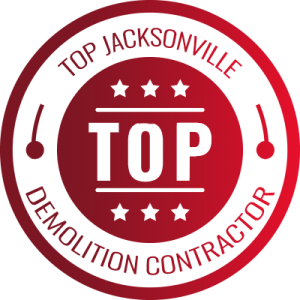



Removing several commercial buildings at once is a big job, especially in Jacksonville where strict regulations, mixed-use areas, and weather conditions add an extra layer of challenge. You’re not just dealing with one structure. You’re working around traffic, utilities, zoning rules, and sometimes other tenants or businesses nearby. That kind of job takes more than just heavy equipment. It takes solid planning from the very beginning.
Without careful prep, things can spiral fast. Delays pile up, safety risks increase, and you end up spending more time and money than expected. Tackling multiple demolitions doesn’t mean treating them all the same either. Each site has its own conditions, and they all have to be handled at the same time. That’s why assessing the full scope of the work before anything starts is the first real step toward getting the job finished smoothly.
Assessing the Scope of the Project
Before crews even step onto the site, a full review of the property is the best way to figure out what you’re really dealing with. Whether it’s a few industrial warehouses on the edge of town or part of a group of old retail structures near Jacksonville’s central business area, knowing exactly what needs to come down helps avoid surprises. This means digging into site layouts, old building plans, and even underground utility lines. Each building may need slightly different handling.
Start with a full walk-through. Figure out the current condition of each structure, whether it’s partially collapsed, still in use, or filled with leftover equipment. Ask questions about whether any materials need special handling, like asbestos, paint, or fuel storage tanks. Once the physical review is done, move on to the paperwork.
Here are a few key things to line up early:
– A list of every structure included in the project, including outbuildings or additions
– Survey reports to identify lot boundaries, elevation changes, or protected spaces
– Plans to disconnect water, gas, sewer, and electrical systems safely
– Permit requirements for demolition based on Jacksonville’s zoning rules
– Any agreements with adjacent property owners or shared access spaces
Local laws can affect how and when demolition can happen in Jacksonville. Some areas have noise or work-hour restrictions. Certain permits take longer than others to get approved. Getting that sorted on the front end helps prevent downtime later. Some commercial properties are also close to environmentally sensitive zones like wetlands or riverfronts, which come with extra layers of review.
Taking the time to assess everything from structure condition to local code rules helps shape the rest of the plan. It’s easier to move fast later when nothing catches you off guard at the start.
Planning and Scheduling
Once you’ve mapped out the full scope, it’s time to plan out each step of the job. With multiple buildings in play, poor scheduling becomes a bigger risk. One delay on one site can jam up equipment use or throw off disposal plans for debris. That’s why you need a master plan that doesn’t just list tasks, but shows how they all fit together. Everyone involved—contractors, safety officers, site owners—should know where and when work is happening.
Break the job down week by week. Identify key dates for teardown, hauling, inspections, and equipment moves. Don’t forget about prep tasks like fencing or setting up staging areas. Then figure out how those steps overlap.
To keep things organized:
- Build a timeline that covers tasks from site prep all the way through final clearance
- Assign crews and machines based on building type and phase, not just availability
- Hold coordination calls or on-site meetings with stakeholders before each new phase starts
- Set up real-time updates or a shared schedule board if multiple teams are working
- Account for possible weather delays in Jacksonville, especially during hurricane season or heavy rain months
Letting crews know who’s doing what, where they’re doing it, and when they need to be out lets each phase run tighter. For example, if one building needs concrete coring while another has steel beam removal, teams can work around each other instead of bumping heads. It cuts down on idle time and keeps equipment running efficiently.
Getting scheduling right at this stage might take longer, but it pays off. It’s harder to fix timing issues once you’re knee-deep in the job. Clear timelines and check-ins help everyone stay aligned and focused.
Ensuring Safety and Compliance
Every commercial demolition in Jacksonville brings different safety needs, especially when several structures are involved. With more moving parts comes more risk. That’s why clear safety rules can’t be skipped. Each crew member needs to know how to stay safe around active machines, falling debris, and tight work zones. The goal is to prevent accidents before they happen, not respond after they do.
It starts with setting up the worksite right. Barrier fencing, warning signs, and designated entry points keep unauthorized people out. Internal traffic control helps crews and trucks move without crossing paths. Some buildings may still have power, live water lines, or aging HVAC systems. These should be isolated or marked early in the process.
To stay compliant and reduce risk, you’ll also want to:
– Provide personal safety gear like hard hats, visibility vests, gloves, and hearing protection
– Create a safety checklist for each phase of the demolition process
– Perform daily site inspections for hazards like unstable walls, trip points, or loose equipment
– Keep emergency response plans on hand, including designated contacts and first aid kits
– Regularly train staff on fall prevention, debris management, and lockout/tagout procedures
From a compliance angle, Jacksonville’s regulations matter just as much as safety habits. Local rules impact how waste gets handled, where trucks can enter and exit, and what type of equipment is allowed during certain hours. In some historical areas, there might also be rules tied to how buildings are taken down, especially if any protected materials or features are involved.
It’s easy to assume that permits and safety signs are just red tape, but they protect the job from bigger interruptions. One stop-work order or reported violation can shut everything down for days. Building safety into the plan early reduces those chances and keeps the team focused on doing the job right.
Managing Equipment and Resources
When multiple buildings come down across the same site or even across separate parts of Jacksonville, your tools need to move just as smoothly as your team does. Having the right mix of machines and gear is step one. But making sure it’s in top shape and ready when needed is what really keeps the project moving.
Commercial teardown work usually calls for excavators, loaders, crushers, and material handling trucks. Sometimes you’ll also need compact machines that fit into tight spaces, especially in areas with limited access. Matching equipment to building size and material type makes a big difference in fuel use and removal time.
Here’s how to stay on top of it:
– Assign machines by phase and building material, such as steel, concrete, or brick
– Schedule equipment servicing windows before high-use days
– Stock extra filters, hoses, fluids, and other consumables on-site
– Use equipment tracking for location, fuel levels, and wear
– Have backup plans for your most-used machines in case one goes down
Even something small like a delayed generator delivery can set back an entire crew. That’s why taking inventory in advance and reviewing logistics around staging, loadout zones, and debris hauling is key. If one structure’s removal runs long, you may need flexible hauling routes or a second team to start on the next location.
For example, we worked a job on the west side of Jacksonville where three buildings had to be removed at once—two were block buildings and one was steel-framed. Moving the heavy steel required switching to specialty grapple attachments midway through the week. That couldn’t have happened without planning and downtime checks already scheduled into the equipment cycle.
Having the tools is only half the picture. Knowing how to use them efficiently, keep them serviced, and move them when needed is what really keeps commercial jobs on track.
How Strategic Planning Pays Off
Taking down several commercial buildings in a city like Jacksonville takes more than just muscle. It’s about prepping every layer of the job, from permits to equipment, with care. When you start with a solid game plan, assign tasks clearly, and keep your team aligned on safety and logistics, the work runs smoother and avoids the usual headaches. That upfront time spent planning can save days or even weeks later on.
There’s no single trick that guarantees a flawless job. But when everything is thought through—site layout, resources, timelines, and local rules—the result is a safer, faster, cleaner project. Commercial sites have people and property nearby, so every step counts a little more. A thorough approach helps prevent delays, protects workers, and shows that your crew knows what it’s doing.
Whether you’re working in Riverside’s older industrial blocks or office parks off Southside, you need a plan tailored to the area, the buildings, and the team. Looping everything together from day one adds structure to a process that thrives on it.
For a comprehensive approach to demolishing commercial properties effectively, trust a team skilled in tackling challenges unique to Jacksonville. If you’re searching for experienced demolition companies in Jacksonville, Elev8 Demolition is here to ensure your project is handled with precision and care. Let’s work together to pave the way for your site’s next chapter.

